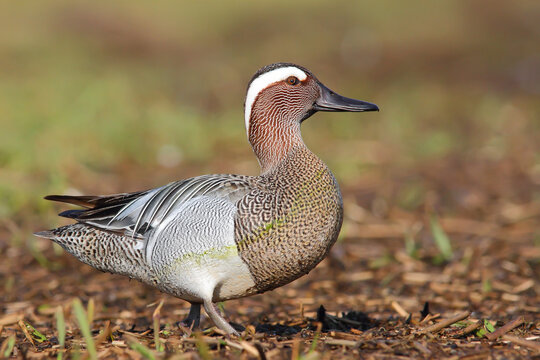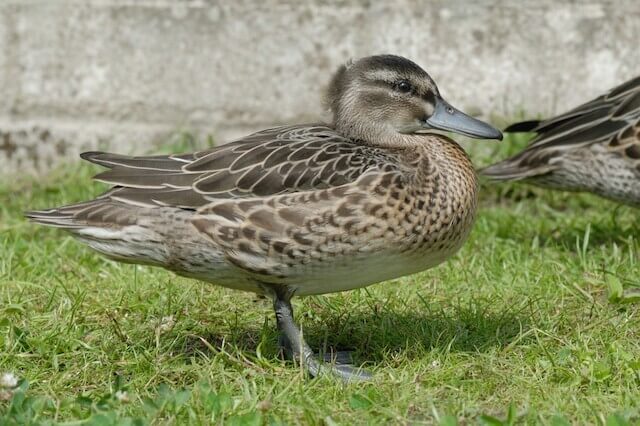Garganey


Scientific Name
Spatula querquedula
Alternative Names
Summer Teal, European Teal
Measurements
| Feature | Male | Female |
|---|---|---|
| Length | About 41 cm (16 in) | About 41 cm (16 in) |
| Wingspan | 58–69 cm (23–27 in) | 58–69 cm (23–27 in) |
| Weight | 300–440 g (10.5–15.5 oz) | 300–440 g (10.5–15.5 oz) |
Status
The Garganey is a small migratory dabbling duck that breeds across Europe and northern Asia, then travels long distances to spend the winter in Africa, India, Bangladesh, and parts of Australasia. It is listed as Least Concern on the IUCN Red List but remains rare in some regions, such as the British Isles.
Identification
Male Garganeys are easy to recognize thanks to their bold white crescent-shaped stripe running from the eye to the back of the head. Their heads are chocolate brown, the body is gray, and they show pale blue patches on the wings in flight. Females are mottled brown and can be confused with female teals, but they have stronger facial markings and often shake their heads while feeding.
Voice
The male’s call is a fast crackling sound often heard during courtship displays. Females are generally quiet but may give soft quacking notes.
Diet
They mainly feed by skimming or filtering the water surface for small aquatic insects, crustaceans, and plant material, rather than tipping forward like some other dabbling ducks.
Distribution
Found breeding across much of Europe and the Palearctic region, Garganeys migrate southward for the winter to Africa and Asia, often forming large flocks in wetlands and shallow lakes.
Habitat
Prefers grassy wetlands, shallow marshes, and steppe lakes with plenty of vegetation for cover. During migration and winter, they gather around calm freshwater ponds, lagoons, and flooded fields.
Breeding
Breeding occurs in northern summer months. The female builds a nest on the ground, hidden among grasses near shallow water, and lays around 8–10 eggs.
Wintering
Entirely migratory, Garganeys travel thousands of kilometers south to warmer regions, including Africa and South Asia, before returning north to breed.
Conservation
Protected under the Agreement on the Conservation of African-Eurasian Migratory Waterbirds (AEWA), the Garganey’s population is stable overall, though local breeding numbers fluctuate due to habitat loss and changing wetland conditions.
